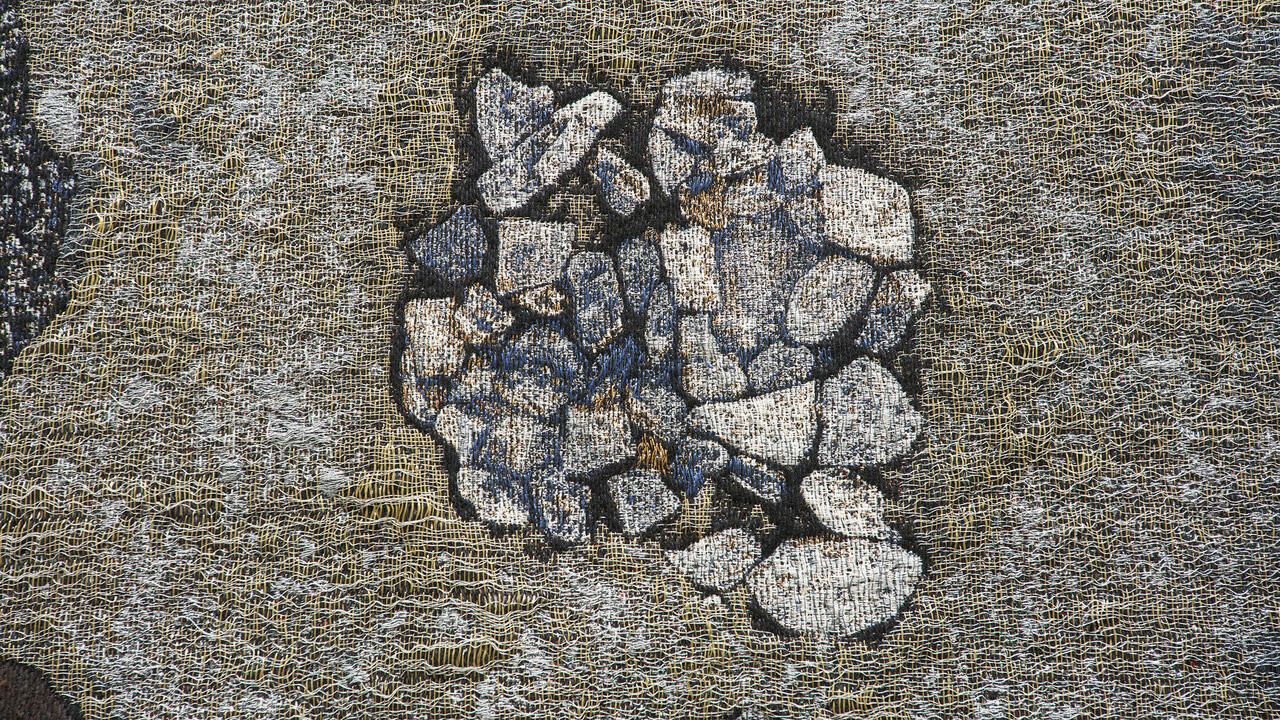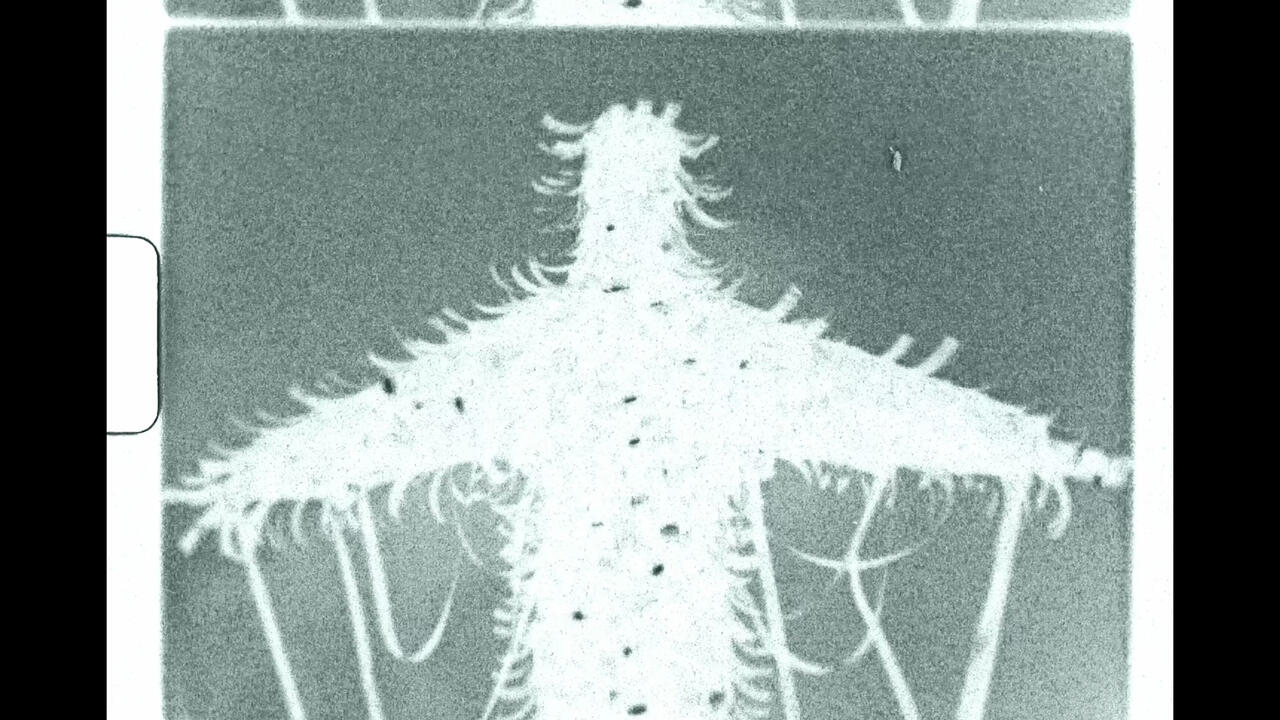Tao Hui’s Landscape of Opposites
The artist’s show at Tai Kwun Contemporary, Hong Kong, characterizes oscillation between detachment and connection as a contemporary condition
The artist’s show at Tai Kwun Contemporary, Hong Kong, characterizes oscillation between detachment and connection as a contemporary condition

Tao Hui’s first institutional show in Hong Kong, ‘In the Land Beyond Living’, opens with a landscape of opposites. The first works that visitors encounter include a curtain of multicoloured, cast-glass chicken’s feet hanging at the show’s entrance. A delicacy in Chinese cuisine, chicken’s feet are considered talismans of fortune given their association with the mythical phoenix, hence the installation’s title: Money Grab Hand (2024). As indicated by Chilling Terror Sweeps the North (2024), a video housed in a striking temple-like structure nearby, chicken’s feet are also used for divination. The female lead describes her grandmother cutting a live chicken’s foot for a fortune teller to read before every new year, after her lover serves chicken’s feet marinated the way his grandmother did. ‘That’s so cruel,’ he says, sadly. ‘When you live in cruelty, you are forced to use cruelty as a tool,’ she replies, unfazed.

Ostensibly a story of star-crossed lovers – a man from the modern, verdant south and a woman from the barren north – Chilling Terror Sweeps the North ruminates on such cruel divides. The video opens in the rocky terrain of Gansu province, where a sickle stabbed through the woman’s head creates a hornlike crown and a small stool embedded into the man’s forehead reference a form of ceremonial entertainment known as Blood Shehuo. What follows is a battle of wills: he can’t understand why she won’t leave her homeland for him; she rails against his inability to see her perspective. In her mind, losing one’s homeland, mother tongue and faith ‘are more devastating than losing love’, he muses, believing that ‘only with love can one find a sense of belonging’. But for her, belonging is rooted in a place, not a person.

The charged subtext of Chilling Terror Sweeps the North is underscored by From Sichuan to Shenzhen (2017) in the next gallery, which grapples with the rural stagnation and urban development that have characterized China since the ‘reform and opening’ era instigated by Deng Xiaoping in the late 1970s, prompting waves of migration. Screens installed above two washbasin stands play a scrolling script in which a migrant worker describes her life in Shenzhen to an old classmate back home; she’s been gone so long she has forgotten her Sichuanese dialect. Hardworking (2023–24) likewise oscillates between states of detachment and connection. Supported by a statue of a melting body, a curved screen shows a livestream marketer selling a television. As her pitch progresses, she moves physically in and out of the product, joining live-streamers, walking with others along a river and sitting alone among trees. Finally, she returns to her studio and lowers the television to reveal a painting of people holding the Chinese characters for ‘seeing’, as if to visualize the experience of alienation and connection that defines the digital and physical worlds alike.

This contradictory condition is also palpable in Being Wild (2021), screened at the show’s exit. In the video, a young woman roller-skates through different sites, including an eerily empty Guangzhou. She describes her fear of being abandoned on the road and how China’s small towns have declined into waystations, and sings Taiwanese folk songs by Tai Zhao-Mei and Helen Wang. Toward the end, she traverses an empty city at night singing about inert things that she characterizes as her friends – ‘don’t be afraid of being alone, the neon is so sincere’ – before skating through a film set by day. There, the lyric ‘don’t be so attached’ frames detachment as a profoundly common coping mechanism. Especially when the future feels out of control.
Tao Hui, ‘In the Land Beyond Living’ is on view at Tai Kwun Contemporary, Hong Kong, until 2 February 2025
Main image: Tao Hui, Money Grab Hand, 2024, exhibition view, ‘In the Land Beyond Living’. Courtesy: Tai Kwun Contemporary





















